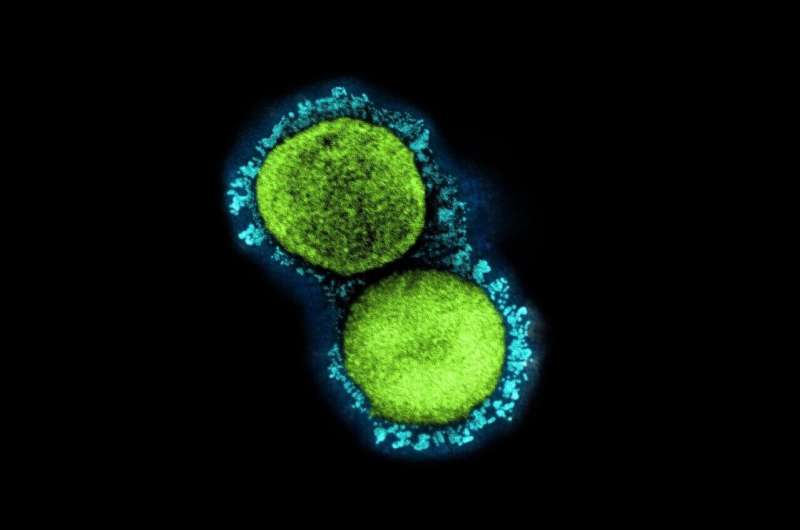A transmission electron micrograph of SARS-CoV-2 virus particles (UK B.1.1.7 variant), isolated from a patient sample and cultivated in cell culture. Credit: NIAID
Since May 2021, drivers crossing into Singapore at the Tuas Checkpoint have been required to breathe into a cigar-sized mouthpiece connected to a mass spectrometer. In less than a minute, the device analyzes the breath samples for COVID-19. According to a new feature article in Chemical & Engineering News, such breath-based diagnostics might be a fast, cheap way to detect infection, although challenges exist.
More than a year into the pandemic, PCR-based assays—which require samples to be collected from patients' nasal passages with a long cotton swab—remain the gold standard for COVID-19 diagnosis. However, such tests are uncomfortable, slow and relatively expensive, according to freelance writer Carrie Arnold. That's why several companies have launched breathalyzer-like tests to detect SARS-CoV-2 infection. These tests rely on altered ratios of volatile organic compounds (VOCs) in exhaled breath, which reflect metabolic changes triggered by the virus. But questions about whether the technology is sufficiently sensitive and reproducible are still unanswered.
One challenge is that researchers haven't sufficiently defined the levels of VOCs in the breath of healthy people, which makes it difficult to accurately measure when someone's exhalation deviates from the norm. As a result, some breath-based tests have had disappointing results when used in real life. Also, some VOCs change similarly in response to different viruses or conditions, making it important to identify unique patterns or ratios of biomarkers that change only upon infection with SARS-CoV-2. Scientists in the field are hopeful that continued standardization and validation will eventually create a robust breath-based diagnostic that might even be able to detect infection earlier than PCR-based tests, before a person begins shedding the virus.
Provided by American Chemical Society
























